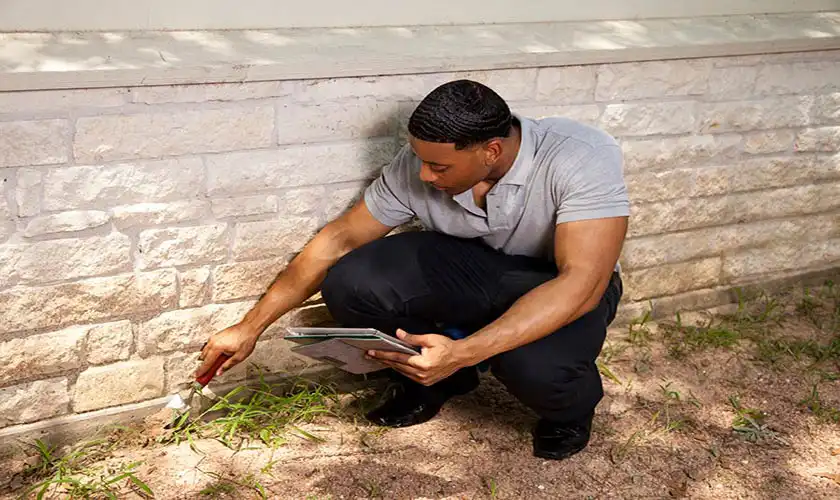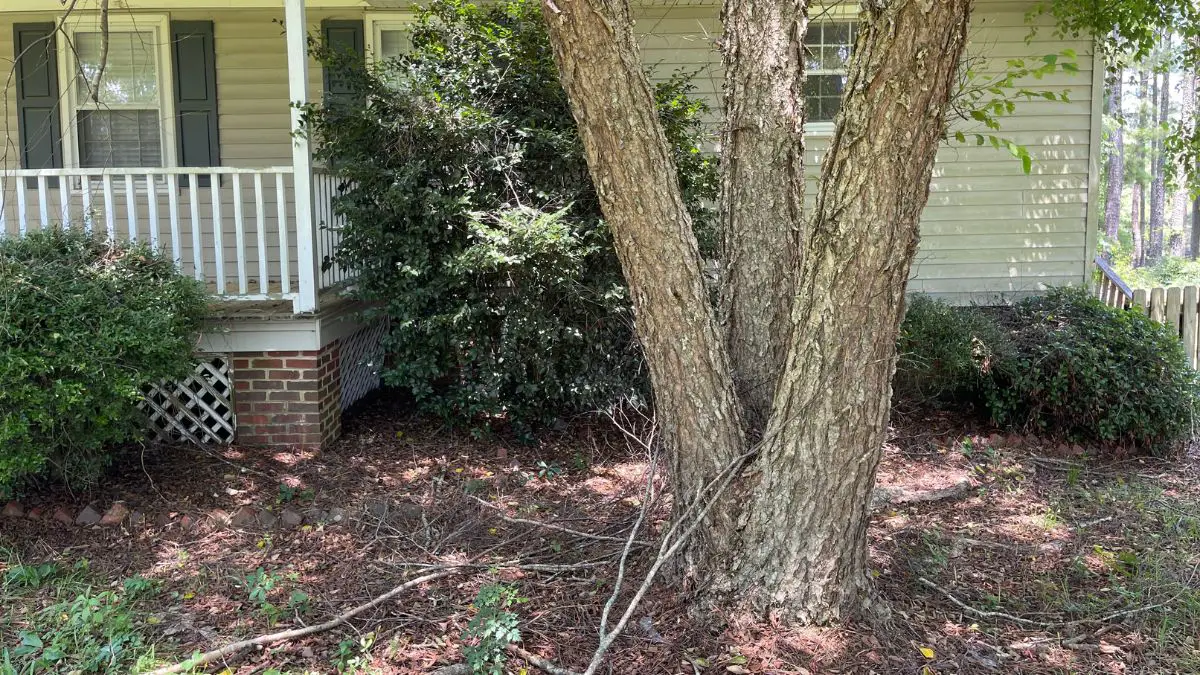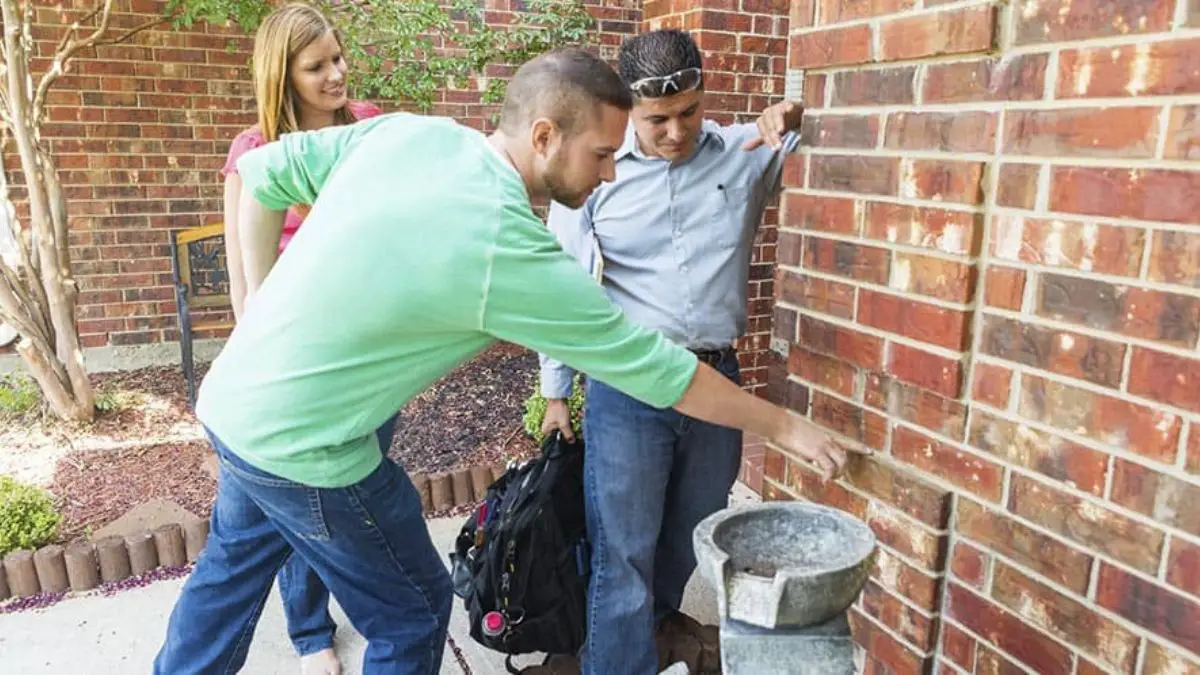A house is one of the biggest investments anyone can make. It is a place to live and a safe haven where one should feel secure and comfortable.
A house with foundation problems can pose significant risks, including structural damage, safety hazards, and decreased property value. Recognizing signs of foundation issues, such as cracks in walls and floors, uneven floors, and doors and windows that stick or won’t close properly, is crucial.
However, when foundation problems arise, they can cause significant concern for homeowners. Foundation problems can be a severe issue that can threaten the integrity and safety of your home. Continue reading to learn whether living in a house with the foundation problems below is safe!
Get FREE quotes from local foundation repair contractors in your area today. Whether you need a pier replaced, basement waterproofing, or a full foundation replacement - We Can Help! All Contractors are screened, licensed, and insured.
| Key Takeaway |
|---|
| Foundation problems can lead to structural damage and decrease property value. |
| Signs of foundation problems include cracks in walls and floors, uneven floors, and doors/windows that stick. |
| Common causes of foundation problems are soil conditions, poor construction techniques, and water damage. |
| Solutions for fixing foundation problems include repair methods like underpinning, slabjacking, and piering. |
| Maintenance techniques such as drainage correction and gutter cleaning can help prevent future foundation problems. |
| Living in a house with foundation problems has advantages (lower upfront costs, possible negotiation of repairs) and disadvantages (safety hazards, decreased property value). |
| Delaying repairs can lead to more severe damage and higher costs in the long run. |
| Repairing foundation problems improves safety, increases property value, and saves money in the long term. |
| The cost of foundation repair varies depending on the nature and severity of the problem and chosen repair solution. |
| Taking immediate action when signs of foundation problems are noticed is important to prevent further damage. |
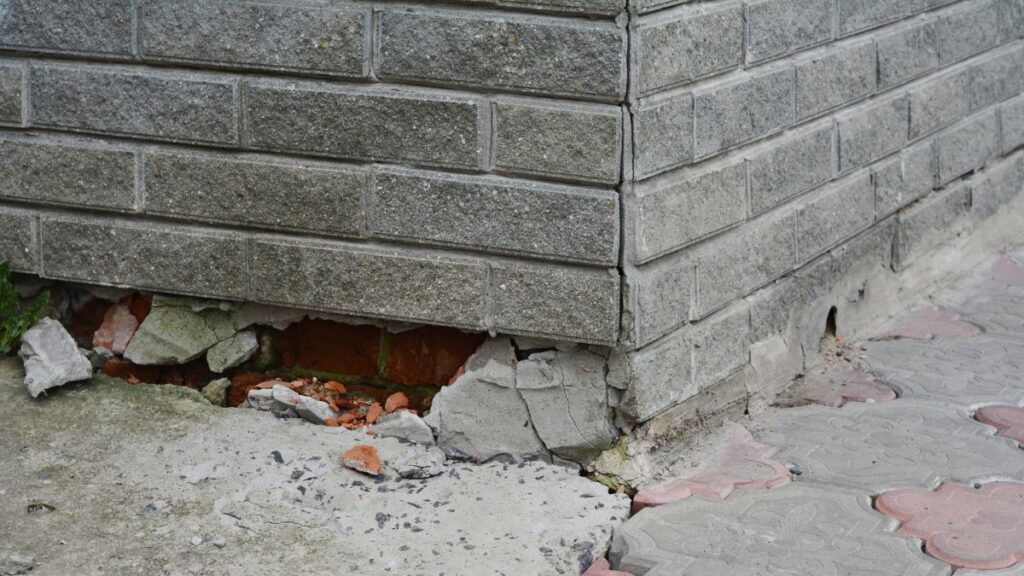
Definition of Foundation Problems
Foundation problems are issues with the structural base of your home, leading to instability and property damage. These issues usually develop over a period of time due to various factors such as soil conditions, poor construction techniques, or water damage.
The most common signs of foundation problems include cracks in walls and floors, uneven floors, doors and windows that stick or won’t close properly, and sagging or sloping rooflines. If left unchecked, foundation problems can lead to significant damage that may compromise the safety of the occupants and their property’s overall value.
Importance of a Strong Foundation for a House
The importance of having a strong or solid foundation for your house cannot be overstated. A proper foundation ensures your home remains stable and withstands natural disasters like earthquakes or flooding.
A strong foundation ensures your house remains level while adequately supporting its weight. This means that the walls will not buckle under pressure from heavy loads such as furniture or appliances; neither will floors sag under people’s weight.
A strong foundation minimizes energy loss by preventing air leakage through gaps between floors, walls, or rooflines. By keeping excessive moisture levels out and maintaining stable indoor temperatures throughout each season, you’ll save money on utility bills while reducing mold growth risks associated with dampness.
Overview of the Topic
Let’s explore the risks of living in a house with foundation problems and look closer at signs of common foundation problems, their causes, and the risks they pose to homeowners. Additionally, we’ll discuss various solutions to fixing foundation problems, including maintenance techniques and major repair methods.
Ultimately, this article aims to answer the question: Is living in a house with foundation problems safe? We’ll weigh the pros and cons of living in such a home and discuss when to act after noticing signs of foundation damage.
Signs of Foundation Problems
The common signs of foundation problems are not always noticeable. Here are some signs to look out for.
Cracks in Walls and Floors
One of the most common and obvious signs of foundation problems is the presence of horizontal cracks in walls and floors. These cracks can appear inside and outside your home and are usually caused by settling or foundation movement. Depending on the severity of the problem, these cracks can be small or large, diagonal or vertical, or even zigzagged.
They may also be accompanied by bulging or bowed walls. If you see any signs of cracking, it’s important to note where they’re located and what direction they’re running in.
Vertical cracks that start at ground level are typically less concerning than those that run diagonally across multiple floors. Additionally, if you notice any new cracks appearing over time, this could indicate a more serious problem with the ongoing settlement.
Uneven Floors
Another telltale sign of foundation problems is uneven flooring throughout your home. This can manifest as sloping floors or areas where the floor noticeably dips or rises. Sometimes, you may even feel a slight bounce when walking across certain parts of the floor.
Uneven floors can be caused by various issues related to foundation settling or shifting. It’s important to take note of any changes you notice over time, as these changes could indicate an ongoing problem that needs attention.
Doors and Windows That Stick or Won’t Close Properly
If your doors and windows suddenly become difficult to open or close properly without explanation, it could indicate an issue with your home’s foundation.
The main cause for this is when shifts cause door frames to twist out-of-square, which prevents them from closing correctly and may lead to gaps between doors/windows and their frames, compromising energy efficiency.
It’s essential not to ignore these warning signs of foundation trouble as it could indicate a problem with your foundation that needs to be addressed as soon as possible.
Sagging or Sloping Roofline
Another sign of foundation issues is a sagging or sloping roofline. This can occur when parts of the foundation settle unevenly, causing the roof to shift and slope downwards over time.
If you notice any changes in your roofline, it’s important to investigate further and seek professional help. Leaving this issue unaddressed can cause serious damage, including water content leaks into your home, leading to other costly repairs.
It’s essential to recognize the signs of foundation issues in your home. Ignoring these signs can lead to more severe problems that could potentially put your safety at risk, so it’s important to take action immediately if you suspect there may be an issue.

Causes of Foundation Problems
These causes of foundation problems are often easily avoidable if you know what to look for.
Soil Conditions: When Soil Becomes the Enemy
Soil conditions play a pivotal role in the health of your home’s foundation. Soil can expand or contract as it gains or loses moisture, causing significant structural damage to your home. Sandy soils, for example, are more prone to shifting and don’t support heavy structures like houses well.
Expansive clay soils will shrink and crack as they dry out, leading to foundation instability. Furthermore, soil composition affects water retention and drainage around your house’s foundation.
Water pools near your foundation, instead of draining away properly, can cause soil erosion or damage to the foundation itself. Similarly, droughts can cause expansive soil to contract and pull away from the foundation walls, leaving them unsupported.
Poor Construction Techniques: Why Good Construction Matters
Your house’s foundation is only as strong as its construction allows. Poorly constructed foundations are susceptible to shifting and cracking under pressure.
In some cases, builders may have used low-quality materials that could not withstand the weight of a structure over time.
Some common mistakes in construction include inadequate footing depth or width for the required load-bearing capacity; inadequate reinforcement or spacing between rebar; insufficient curing time for poured concrete; and improper use of building materials like cinder blocks.
Water Damage: The Silent Killer
Water damage is one of the biggest culprits behind foundation problems. Leaks in plumbing systems or roofs can introduce moisture into your basement or crawl space that will eventually lead to mold growth and rotting wood framing members- this is particularly concerning when these areas also support the weight of your home above them.
Over time, water seepage can also erode soil particles around your home’s footings and cause them to settle unevenly – potentially causing serious structural issues.
Water damage can also occur when your home is built below the water table, where the soil around your foundation will constantly be saturated with water.
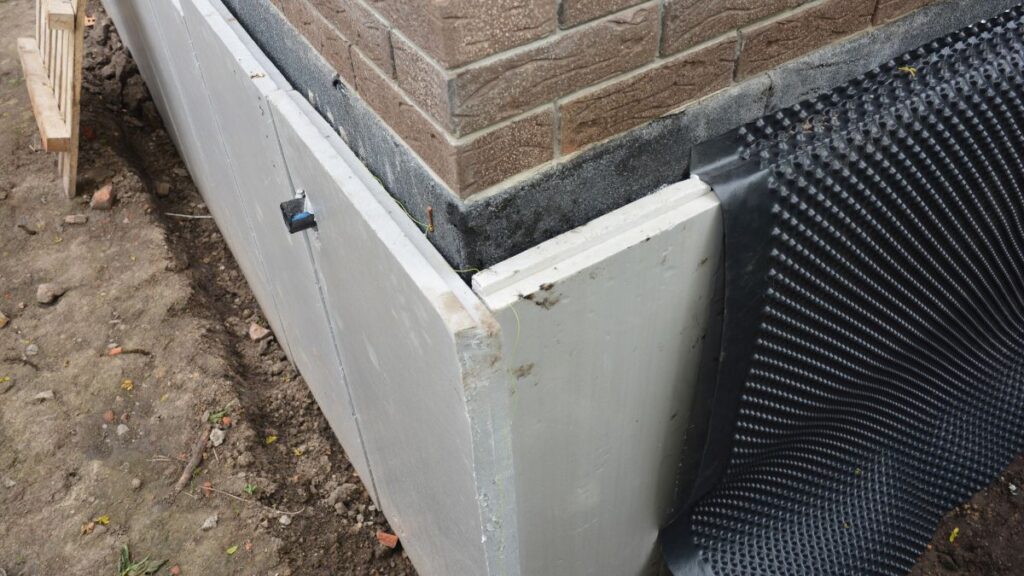
Risks Associated with Living in a House with Foundation Problems
Living in a house with foundation problems isn’t without some risks.
Structural Damage to the House
When a house has foundation problems, it means that the base of the structure is not stable. This can lead to various types of structural damage to the house.
Walls may start cracking or bowing, and floors may begin to slope or sink. As the foundation shifts, it can cause even more severe structural issues, such as windows and doors that no longer fit into their frames or chimneys that tilt or collapse.
Another common result of foundation problems is water damage. Moisture can seep through cracked walls and floors, causing mold to grow, which can be detrimental to the health of occupants.
Furthermore, water damage can weaken structural elements such as wooden beams which support a house’s weight. If left unchecked, foundation problems can cause extensive damage that may lead to expensive repairs.
Safety Hazards for Occupants
Foundation problems pose various safety hazards for occupants in a house with these issues. For example, sagging or sloping roofs are more prone to leaks and collapses, potentially harming someone inside the home. Uneven floors increase the risks of falls and other accidents, making daily activities like cooking and walking much more difficult.
Other safety hazards include radon gas exposure and carbon monoxide poisoning from malfunctioning furnaces because diagonal cracks in foundations create gaps where dangerous gases could enter living spaces instead of being vented outside safely through chimneys.
If not addressed promptly, foundation problems could cause walls or even entire sections of home structures to collapse entirely, endangering inhabitants’ lives.
Decrease in Property Value
Foundation problems decrease property values since real estate professionals view them as severe defects when appraising homes on behalf of potential buyers.
Homeowners who want to sell their homes will find it difficult because buyers may not want to incur the potential costs of repairing foundation problems independently. Additionally, insurance companies may perceive a house with foundation issues as a higher risk and charge higher premiums or deny coverage entirely.
The damage to the structure can increase, further lowering the property’s value. Therefore, it is paramount to have foundation problems fixed before they escalate into even more significant issues and cause irreparable damage.
Solutions to Fixing Foundation Problems
When it comes to fixing foundation problems, there are two main approaches: repair and maintenance. Repair involves addressing the underlying issue that is causing the foundation problem, while maintenance focuses on preventing problems from occurring in the first place.
Both options have advantages and disadvantages; choosing one will depend on the severity of your foundation problem and your budget.
Foundation Repair Process Methods
If you choose a repair approach, several effective methods are available. One popular method is underpinning, which involves supporting the foundation by installing foundation piers or pilings beneath it.
This helps stabilize the house foundation by transferring its weight onto more stable soil or bedrock. Another option is slab jacking or mudjacking, which involves lifting and leveling concrete slab foundations by injecting a mixture of cement, water, and sand beneath them.
Piering involves installing steel piers or helical piers anchors into the ground to support a sinking or settling foundation. Each of these effective methods has its own benefits and drawbacks.
For example, underpinning can be expensive but provides long-term stability for your home’s foundation. Slabjacking is less expensive but may not work as well for larger areas of damage.
Maintenance Techniques
Maintenance techniques can help prevent future foundation problems by addressing issues that can cause damage over time. One common technique is drainage correction: ensuring water flows away from your home’s foundation rather than pooling around it.
This can be achieved through grading around the home or installing gutters and downspouts. Gutter cleaning is another important maintenance task that can help prevent water damage to your home’s foundation.
When gutters become clogged with leaves and debris, excess of water can overflow onto the ground near your home’s foundation, leading to soil erosion and other problems. Grading around the home can help prevent water from pooling around the foundation by sloping the ground away from it.
Overall, there are many solutions available for fixing and preventing foundation problems. By carefully considering your options and consulting with a professional, you can decide which approach is right for you and your home.
Is it Safe to Live in a House with Foundation Problems?
Depending on your perspective, living in a house with foundation problems can be both an advantage and a disadvantage. Let’s examine the pros and cons of staying in such a house.
Pros of Living in a House with Foundation Problems
One of the advantages of living in a houses with foundation problems is the possibility of lower upfront costs. You may be able to purchase the home at a lower price than similar houses without foundation issues.
Additionally, if you are planning to renovate or change the layout, it might be easier and more cost-effective to do so while fixing the foundation issue.
Another benefit is that you might be able to negotiate some repairs or renovations into your agreement when purchasing the house. This could save you money and hassle later on by taking care of both issues at once.
Cons of Living in a House with Foundation Problems
The primary downside is safety concerns for occupants. If left unrepaired, foundation failure or problems can lead to structural damage that could endanger those living inside – particularly during natural disasters like earthquakes or severe weather events.
Moreover, living in such conditions can cause frustration due to difficulties opening doors or windows, sloping floors that lead to items falling over and breakage risks among others. The unsafe environment will also decrease property value plus make it difficult for homeowners trying to sell their homes.
Risks Associated with Delaying Repairs
Delaying repairs for any length of time has serious consequences on both finances and safety concerns which should not be ignored by homeowners facing this dilemma. One consequence is that damage worsens over time, and repair costs build up since small issues become bigger when left unattended.
In addition, procrastinating can negatively impact your home’s resale value because potential buyers will see unresolved foundational issues as red flags. Furthermore, waiting too long to repair foundational problems could mean vacating the property to fix the foundation, causing additional inconvenience and expenses.
Benefits of Repairing Foundation Problems
Repairing foundation problems is essential in maintaining your home’s safety and improving its value while creating a more comfortable living environment for you and your family.
Hiring a professional foundation contractor can resolve any foundational issues and restore structural soundness. Moreover, fixing foundational problems can increase your home’s value by enhancing its appearance, functionality, and safety.
It also saves homeowners money in the long run since settling foundations leads to other structural damages, translating into costly repairs. Living in a house with foundation issues is not safe or advisable as it poses safety issues or risks that worsen over time if left unattended.
The best course of action is to schedule repairs as soon as symptoms arise rather than delaying them, which only causes more expense and puts occupants at risk. Remember that fixing foundation issues will improve your quality of life and save costs over time, so it’s worth taking immediate action when they are detected.
Understanding the Cost of Foundation Repair
The cost of foundation repair can vary depending on several factors. These include the nature and severity of the problem, the chosen repair solution, geographical location, foundation type, home size, and accessibility.
For instance, minor cracks repaired with polyurethane are more affordable than extensive underpinnings with piers. In the case of a single-family home in Kansas City, Missouri, foundation repair using piers typically starts at $5,000 to $25,000.
To obtain an accurate cost estimate for your specific unfixed foundation problem, it is advisable to consult a professional foundation repair contractor who can conduct an inspection and provide a tailored repair estimate.
Remember, addressing foundation issues promptly can help minimize costs. Don’t hesitate to seek professional assistance, as early intervention is often more cost-effective in the long run.
Summary of key points
- Foundation problems can cause significant risks such as structural damage to the house, safety hazards for occupants, and decreased property value.
- Signs of foundation trouble include hairline cracks in bricks, walls, and floors, uneven floors, doors and windows that stick or won’t close properly, and sagging or sloping rooflines.
- The causes of foundation problems are soil conditions, poor construction techniques, and water damage.
- The solutions to fixing foundation problems include foundation repair methods such as underpinning, slab jacking, and piering. Maintenance techniques like drainage correction, gutter cleaning, and grading are also useful.
Importance of taking action when signs of foundation problems are noticed
Suppose you notice any common issues in the foundation of your home or building structure causing unevenness on the floor or foundation cracks on walls. In that case, you should take immediate action by contacting licensed professionals who specialize in repairing foundations.
Foundation repairs can be costly, but delaying repairs may lead to more significant damage that could cost more money over time. The earlier you detect any warning signs or symptoms related to your foundation’s health status, the better your chance of saving your home from further destruction.
FAQs: House with Foundation Problems
What happens if a house has foundation issues?
A house with foundation issues can lead to various problems and risks. Some consequences include structural damage to the house, such as cracking walls, bowing or sagging floors, and roofline issues.
Can a house with a bad foundation be saved?
Yes, foundation problems can be repaired or stabilized through various techniques such as underpinning, foundation piers, or slab jacking.
How do you tell if a house has a bad foundation?
Signs of a bad foundation in a house include visible cracks in walls, floors, or ceilings wider than 1/4 inch wide, uneven or sloping floors, sticking doors and windows, gaps around doors and windows, cracked moldings, and leaning or bowing walls.
When should you walk away from foundation problems?
Walk away from a house with severe foundation problems to avoid safety and financial risks.
Will a bank finance a house with foundation problems?
Banks may hesitate to finance a house with significant foundation problems, as the foundation’s condition is crucial for a property’s structural integrity. You’re more apt to receive a conventional loan than an FHA loan on the house with significate foundation issues.
Final Thoughts
If you’re concerned about your home’s structural integrity due to possible foundational deterioration issues that might affect its overall condition negatively, don’t wait too long before addressing these issues.
The process may seem daunting, but it’s better to take action now than wait until it’s too late. By working with experienced professionals and following the right maintenance techniques, you can ensure a safe living environment for yourself and your family.
Remember that the foundation is the most important part of any structure, providing stability and support for the entire building. A strong foundation means a secure home or building that will last years.


